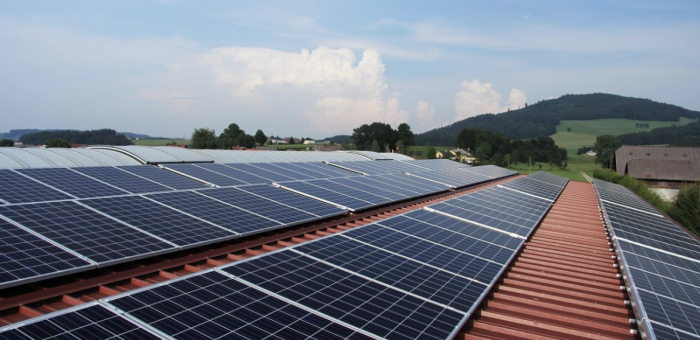Learn how Texas Retail Electricity Providers Determine the Price of Their Plans
Everyone who’s ever purchased a Texas electricity plan has asked a couple of questions during the search process. Which of these plans is right for me? How do these energy companies calculate these rates?
The first question is precisely why Power Wizard exists. You can opt to visit each REP’s website and compare plans one by one, which can be very time consuming, or you can use an electricity comparison site like Power Wizard, which aggregates the top companies and plans in one place and makes it easy for you to filter plans based on your needs and preferences.
Answering the second question requires a more nuanced understanding of how the energy industry works. The supplier’s cost of electricity plans can be viewed from four key elements:
- Supply and Demand
- Seasonality
- Transmission and Distribution
- Purchasing Processes
Let’s dig in a bit deeper into those crucial factors.
1) Supply and Demand
Unlike other goods, you can not easily store electricity. When electricity is required, it is created. As more people start using electricity – heaters, air conditioners, televisions, kitchen appliances, and more – the price of electricity goes up. That’s demand in action.
On the other side of the equation, supply presents a different challenge because meeting the demand for that electricity requires coordinating efforts between generators that don’t always work together very well. Each generation company can charge a different price to start operations. This means both the utility companies and Retail Electricity Providers (REPs) have to negotiate a different rate for each generation company.
It’s all in the name of providing enough supply to meet demand. If demand is low, you don’t need lots of supply, which means those generators will charge a low price to operate because they need the business. If demand is high, the generators can charge higher prices because energy companies need to quickly ramp up supply.
2) Seasonality affects how energy companies calculate their rates
When and how people use energy in relation to the seasons directly impacts supply and demand. Sure, that seems quite obvious – people living in Houston, TX will use much more electricity in July than they will in January – but energy traders must account for those more dramatic peaks and valleys in usage when making purchases for long-term fixed-rate plans. Calculating for and anticipating seasonal demand for electricity means that energy companies engage in higher-end economic modeling in order to ensure their prices are appealing to customers while also hedging against big seasonal spikes in usage.
3) Transmission and Distribution
REPs aren’t responsible for transmitting electricity across power lines and distributing it to homes and businesses. That’s the responsibility of the utility company. As you might imagine, the utility company doesn’t do that work for free, so the electricity companies have to pay the utility companies to get electricity to their customers.
Admittedly, those transmission and distribution charges don’t change that often, but since they are passed onto customers, they must be factored into the electricity prices customers are shown. In fact, many electricity companies break out these charges on their bills to show customers which charges go to them and which ones go to the utility company.
4) Purchasing Processes impact how energy companies calculate their rates
Eventually, everything trickles down to how energy is actually purchased. Since supply and demand fluctuate on a regular basis even on the mildest spring days, energy companies monitor those prices on 15-minute increments as measured cents per kilowatt-hour (kWh). They use this information to determine the best times and prices at which to buy that energy.
But real people don’t think about energy like that, and they certainly don’t buy it like this. Hence, the price you see from REPs for their plans is a projection of the average price they’ll pay for that plan in those 15-minute increments for the life of the contract term. Or put another way:
- You see an electricity plan with a rate of 10 cents per kWh for a fixed 12-month contract term.
- That’s the rate you will pay for each kWh of electricity you use for 12 months.
- The REP bought energy in bulk at that price because projections say the average price will be around 10 cents per kWh for that contract term, even with seasonality involved.
- The provider hopes that the average price stays just under 10 cents per kWh. If so, they meet their margins and make some profit.
- The REP hopes the average price doesn’t go above that rate. If it does, that means they’re losing money on everyone who bought energy at that price.
In short, the energy companies purchase electricity based upon how much they think people will use in the future, how weather could impact that usage, and the cost of transporting it on power lines. Their ultimate goal: Calculate a low-enough rate that attracts enough customers while still being high enough to turn a profit.
Try Power Wizard today. Our advanced technology cuts out the industry noise and finds you the plan that gives you the best chance to save!
More From the Power Wizard Blog
-
Affordable Electric Bill: Power Wizard’s Promise of Protection
Sarah, a proud Texan, knows that everything is bigger in Texas – including the choices when it comes to electricity providers. She’s no stranger to the complexities of deregulated energy markets. With a bustling household, she juggles work, family, and keeping the lights on. But there’s one thing Sarah doesn’t want to juggle: her electric bill. […]
View Article -
How to Cancel Your Electricity Contract with Your Provider
There are many advantages to changing your electrical service, including finding a better price, switching to a company with better customer service, and finding a distributor with a green appeal. It’s easiest to end your service when a contract ends, but sometimes it makes sense to switch early. For instance, you may find that you’re […]
View Article -
How to clean your solar panels
Click on a section to skip directly to it: Why is it important to clean your solar panels?Solar panel cleaning: a step-by-step breakdownMake sure you’re saving the most on your monthly energy bill Have you considered installing a renewable energy source at your home? Power Wizard recommends trying solar energy, which accounts for 3% of […]
View Article -
Incentive-Based Energy Plans: What Are Your Options?
Incentive-based energy plans are becoming critically important as war, sanctions, and declining fossil fuel production cause nonrenewable energy prices to skyrocket. Fortunately, private companies are busy developing energy-efficient technologies while all levels of government are offering substantial financial incentives for consumers to adopt renewable energy sources. Let’s examine the many federal, Texas, and local energy […]
View Article -
How Long Do Solar Panels Last?
Owning a home is expensive, and that’s not expected to change anytime soon. On top of everything else, the cost of energy can be a burden for many familiar and even more so when temperatures reach extreme highs and lows. Whether you’re well-off or living paycheck to paycheck, you’re probably interested in lowering your energy […]
View Article -
How Time of Use Energy Plans Work
Once, one company controlled all aspects of your electricity. Whether you liked it or not, you had to agree with the charges of that company and pay the bills. Those days are over, as you can now choose an electricity provider within a deregulated market and pick the best rates for yourself. You even have […]
View Article -
How to Set Up Electricity in an Apartment
Click on a section to skip directly to it: 7 Steps to Help You Set Up Electricity When Moving to a New Apartment BuildingHow Long Does it Take to Set Up Electricity When You Move?Avoid a High Monthly Cost by Choosing the Best Energy Plan Moving to a new apartment can be equal parts exciting […]
View Article -
How to Understand Your Texas Power Bill
When your Texas power bill arrives, what do you do? Many people only look at the amount due and pay it without a second thought (unless they notice that the total is significantly higher than the month before). Understanding your electricity bill and the charges on your bill can save you from overpaying for electricity. Don’t […]
View Article












